| Table 1: | Tips and Troubleshooting Chart |
Your vehicle may have a DVD Rear Seat Entertainment (RSE) system. The RSE system works with the vehicle's audio system. The DVD player is part of the front radio. The RSE system includes a radio with a DVD player, a video display screen, and if your vehicle has a third row seat, it could have a second video display screen, audio/video jacks, two wireless headphones, and a remote control. See Radio(s) for more information on the vehicle's audio/DVD system.
Driver Control of the Audio System
The driver has basic control of the whole audio system. Press and hold the (power) knob for more than two seconds to turn off the radio, RSE (rear seat entertainment), and the RSA (rear seat audio). See Radio(s) for more information.
If your vehicle has the navigation system, see the Navigation System manual for more information.
Before You Drive
The RSE is designed for rear seat passengers only. The driver cannot safely view the video screen while driving and should not try to do so.
In severe or extreme weather conditions the RSE system might not work until the temperature is within the operating range. The operating range for the RSE system is above -4°F (-20°C) or below 140°F (60°C). If the temperature of your vehicle is outside of this range, heat or cool the vehicle until the temperature is within the operating range of the RSE system.
Headphones
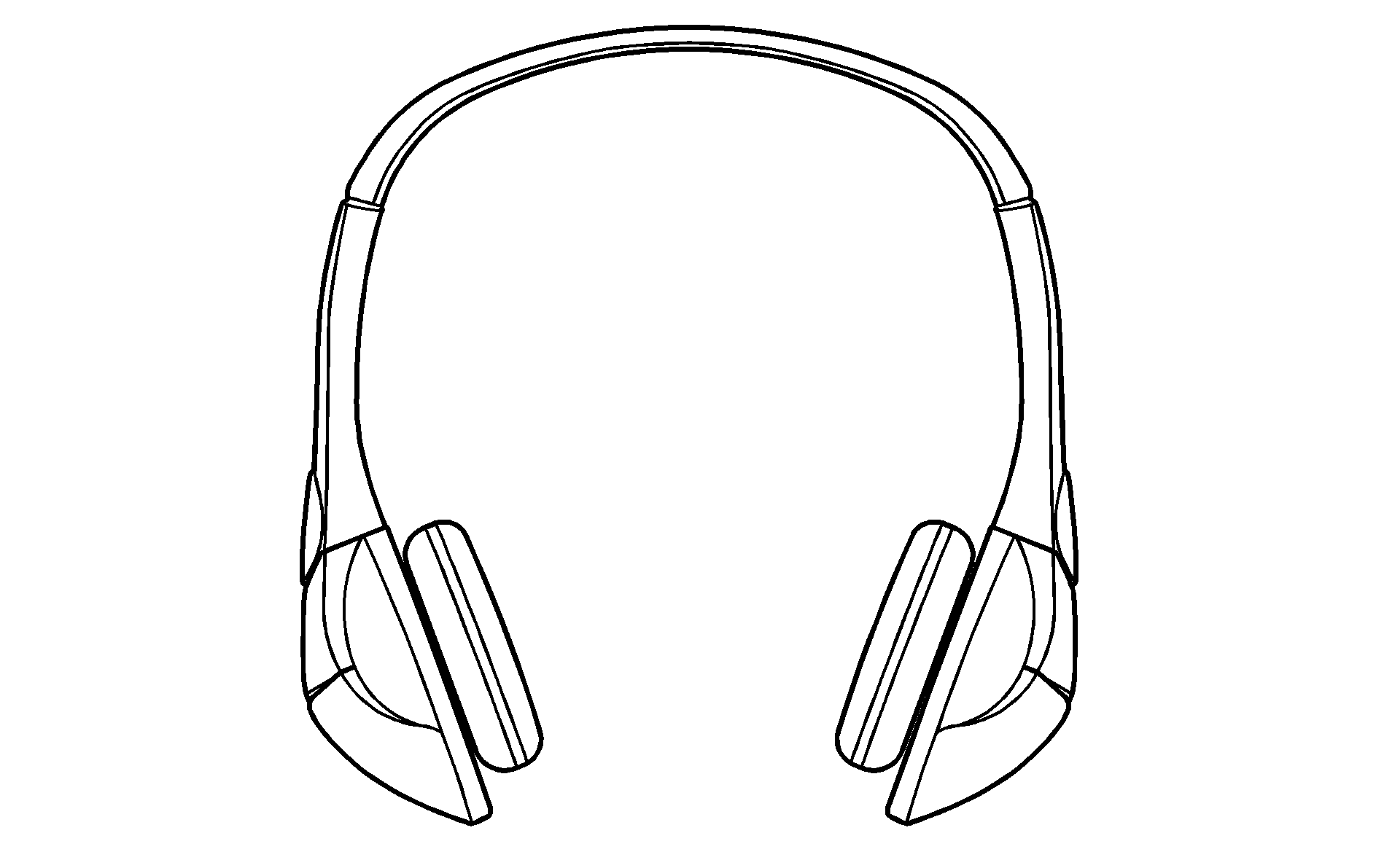
The RSE includes two 2-channel wireless headphones that are dedicated to this system. Channel 1 is dedicated to the DVD player, while Channel 2 is dedicated to RSA selections. These headphones are used to listen to media such as CDs, DVDs, MP3s, DVDAs, radio, any auxiliary source connected to A/V jacks, or the auxiliary input jack, if your vehicle has this feature. The wireless headphones have an On/Off button, channel 1/2 switch, and a volume control.
If your vehicle has a third row video screen display, it has two additional headphones.
Push the power button to turn on the headphones. An indicator light located on the headphones comes on. If the light comes on but, there is intermittent sound and/or static on the headphones, or if the indicator light does not come on, the batteries might need to be replaced. See "Battery Replacement" later in this section for more information. Switch the headphones to Off when not in use.
The infrared transmitters are located at the rear of the RSE overhead console. The headphones shut off automatically to save the battery power if the RSE system and the RSA are shut off or if the headphones are out of range of the transmitters for more than 3 minutes. If you move too far forward or step out of the vehicle, the headphones lose the audio signal.
The headphones automatically turn off after four hours of continuous use.
To adjust the volume on the headphones, use the volume control located on the right side.
For optimal audio performance, the headphones must be worn correctly. The symbol L (Left) appears on the upper left side, above the ear pad and should be positioned on the left ear. The symbol R (Right) appears on the upper right side, above the ear pad and should be positioned on the right ear.
Notice: Do not store the headphones in heat or direct sunlight. This could damage the headphones and repairs will not be covered by the warranty. Storage in extreme cold can weaken the batteries. Keep the headphones stored in a cool, dry place.
If the foam ear pads attached to the headphones become worn or damaged, the pads can be replaced separately from the headphone set. See your dealer/retailer for more information.
Battery Replacement
To change the batteries on the headphones, do the following:
- Turn the screw to loosen the battery door located on the left side of the headphones. Slide the battery door open.
- Replace the two batteries in the compartment. Make sure that they are installed correctly, using the diagram on the inside of the battery compartment.
- Replace the battery door and tighten the door screw.
If the headphones are to be stored for a long period of time, remove the batteries and keep them in a cool, dry place.
Audio/Video (A/V) Jacks
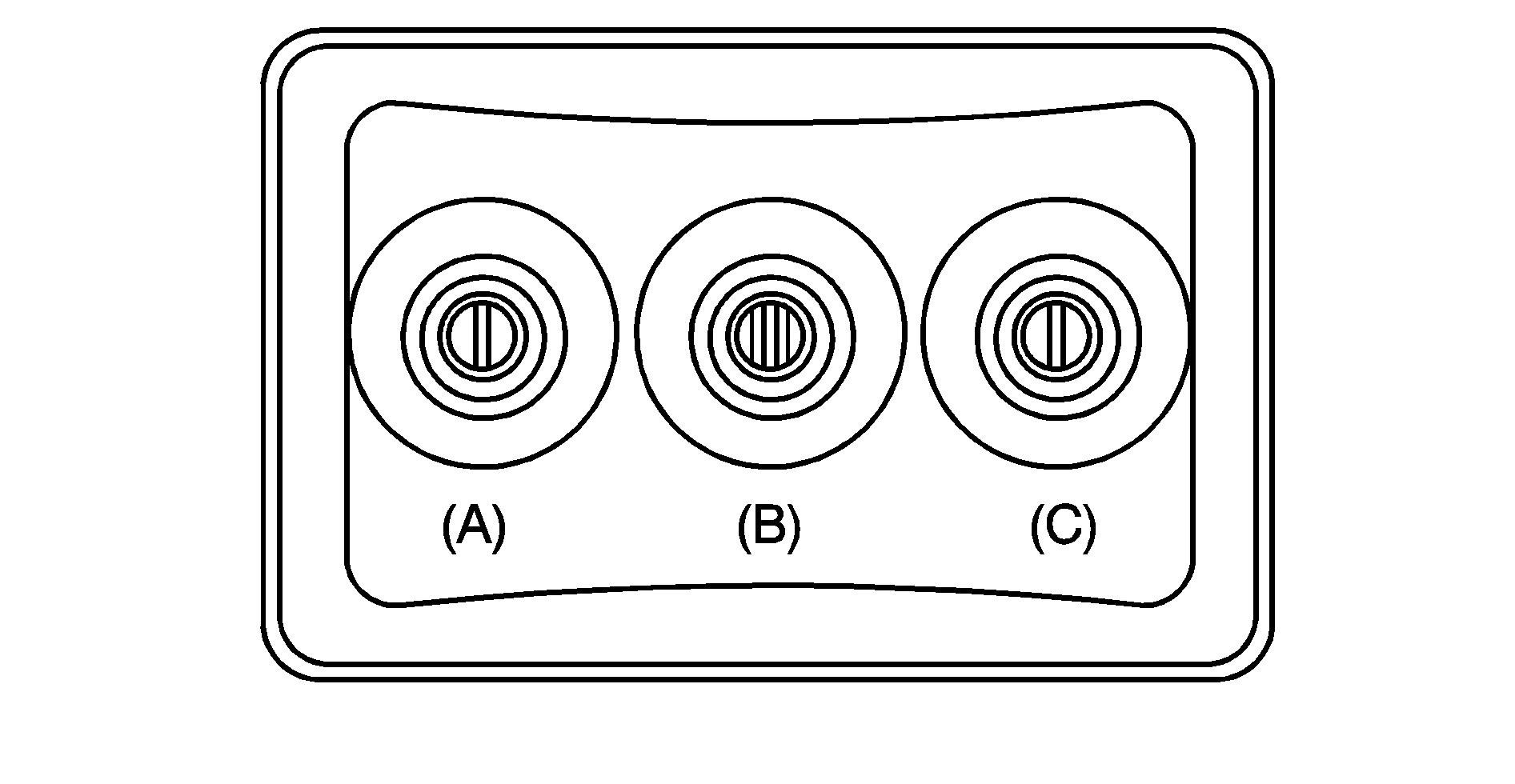
The A/V jacks are located on the rear of the floor console. The A/V jacks allow audio or video signals to be connected from an auxiliary device such as a camcorder or a video game unit to the RSE system. Adapter connectors or cables (not included) may be required to connect the auxiliary device to the A/V jacks. Refer to the manufacturer’s instructions for proper usage.
The A/V jacks are color coded to match typical home entertainment system equipment. The yellow jack (A) is for the video input. The white jack (B) is for the left audio input. The red jack (C) is for the right audio input.
Power for auxiliary devices is not supplied by the radio system.
To use the auxiliary inputs of the RSE system, connect an external auxiliary device to the color-coded A/V jacks and turn both the auxiliary device and the video screen power on. If the video screen is in the DVD player mode, pressing the AUX (auxiliary) button on the remote control switches the video screen from the DVD player mode to the auxiliary device. The radio plays the audio of the connected auxiliary device by sourcing to auxiliary. See Radio(s) for more information.
For optimal sound quality, increase the portable audio device's volume to the loudest level. Higher levels of volume decreases audio distortion.
It is always best to power your portable audio device through its own battery while playing.
How to Change the RSE Video Screen Settings
The screen display mode (normal, full, and zoom), screen brightness, and setup menu language can be changed from the on screen setup menu. To change any feature, perform the following:
- Press the (display menu) button on the remote control.
- Use the remote control , , , navigation arrows and the button to use the setup menu.
- Press the menu button again to remove the setup menu from the screen.
Audio Output
Audio from the DVD player or auxiliary inputs can be heard through the following possible sources:
| • | Wireless Headphones |
| • | Vehicle Speakers |
| • | Vehicle wired headphone jacks on the rear seat audio system, if your vehicle has this feature. |
The RSE system always transmits the audio signal to the wireless headphones, if there is audio available. See "Headphones" earlier in this section for more information.
The DVD player is capable of outputting audio to the wired headphone jacks on the RSA system, if your vehicle has this feature. The DVD player can be selected as an audio source on the RSA system. See Rear Seat Audio (RSA) for more information.
When a device is connected to the radio's auxiliary input jack, if your vehicle has this feature, or A/V jacks, the rear seat passengers are be able to hear audio from the auxiliary device through the wireless or wired headphones. The front seat passengers are able to listen to playback from this device through the vehicle speakers by selecting AUX as the source on the radio.
Video Screen
The video screen is located in the overhead console.
To use the video screen, do the following:
- Push the release button located on the overhead console.
- Move the screen to the desired position.
When the video screen is not in use, push it up into its locked position.
If a DVD is playing and the screen is raised to its locked position, the screen remains on, this is normal, and the DVD continues to play through the previous audio source. Use the remote control power button or eject the disc to turn off the screen.
The overhead console contains the IR transmitters for the wireless headphones and the IR receivers for the remote control. They are located at the rear of the console.
Notice: Avoid directly touching the video screen, as damage may occur. See "Cleaning the Video Screen" later in this section for more information.
Remote Control
To use the remote control, aim it at the transmitter window at the rear of the overhead console and press the desired button. Direct sunlight or very bright light can affect the ability of the RSE transmitter to receive signals from the remote control. If the remote control does not seem to be working, the batteries may need to be replaced. See "Battery Replacement" later in this section. Objects blocking the line of sight can also affect the function of the remote control.
If a CD or DVD is in the Radio DVD slot, the remote control power button can be used to turn on the video screen display and start the disc. The radio can also turn on the video screen display. See Radio(s) for more information.
Notice: Storing the remote control in a hot area or in direct sunlight can damage it, and the repairs will not be covered by the warranty. Storage in extreme cold can weaken the batteries. Keep the remote control stored in a cool, dry place.
If the remote control becomes lost or damaged, a new universal remote control can be purchased. If this happens, make sure the universal remote control uses a code set of Toshiba®.
Remote Control Buttons
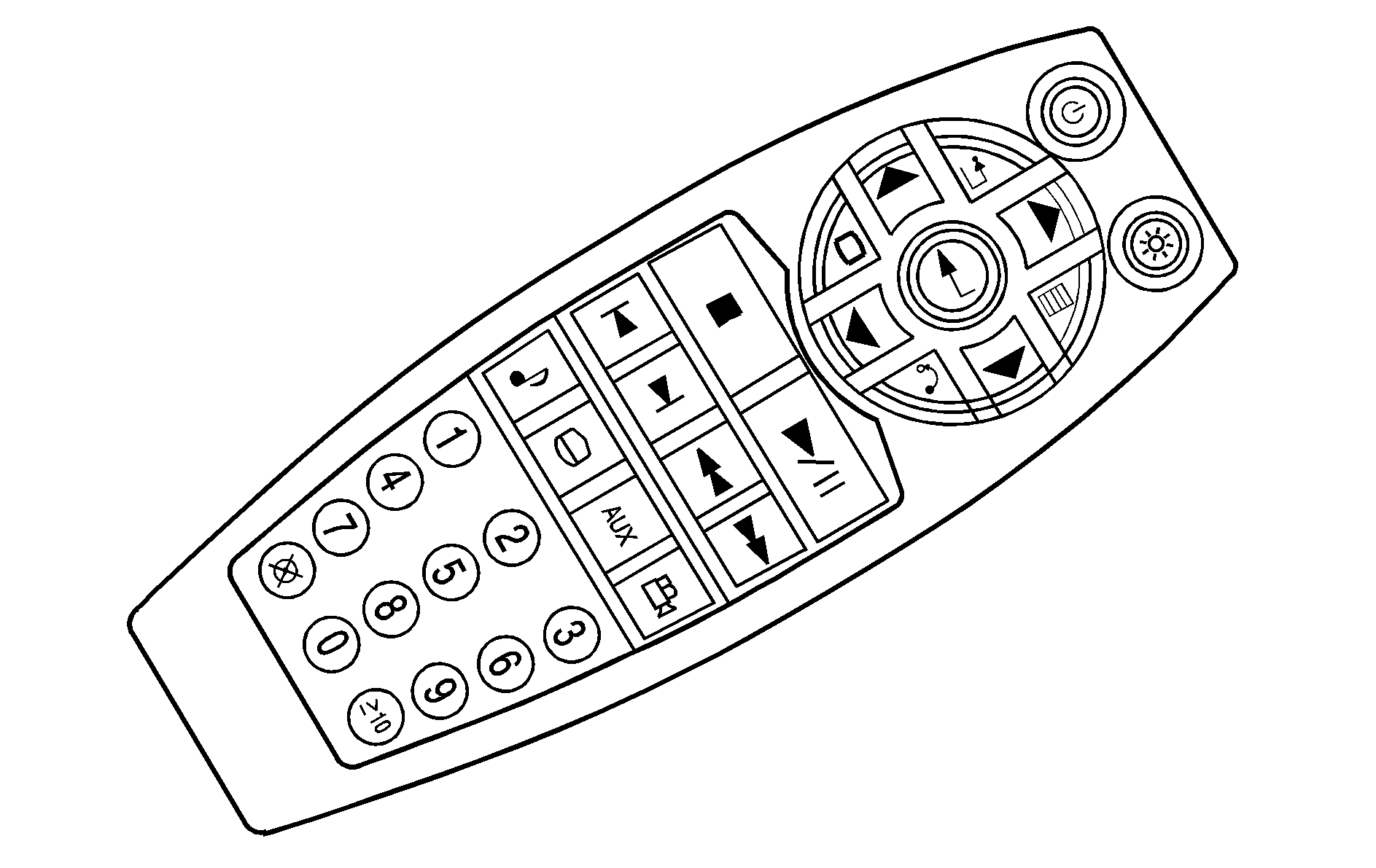
(Power): Press to turn the video screen on and off.
(Illumination): Press to turn the remote control backlight on. The backlight automatically times out after 7 to 10 seconds if no other button is pressed while the backlight is on.
(Title): Press to return the DVD to the main menu of the DVD. This function can vary for each disc.
(Main Menu): Press to access the DVD menu. The DVD menu is different on every DVD. Use the navigation arrows to move the cursor around the DVD menu. After making a selection press the enter button. This button only operates when using a DVD.
, , , (Menu Navigation Arrows): Use the arrow buttons to navigate through a menu.
(Enter): Press to select the choice that is highlighted in any menu.
(Display Menu): Press to adjust the brightness, screen display mode (normal, full, or zoom), and display the language menu.
(Return): Press to exit the current active menu and return to the previous menu. This button operates only when the display menu or a DVD menu is active.
(Stop): Press to stop playing, fast reversing, or fast forwarding a DVD. Press twice to return to the beginning of the DVD.
(Play/Pause): Press to start playing a DVD. Press while a DVD is playing to pause it. Press again to continue playing the DVD. When the DVD is playing, depending on the radio, you might be able to do slow play by pressing the play/pause button then pressing the fast forward button. The DVD continues playing in a slow play mode. You can also, depending on the radio, perform reverse slow play by pressing the play/pause button and then pressing the fast reverse button. To cancel slow play mode, press the play/pause button.
(Previous Track/Chapter): Press to return to the start of the current track or chapter. Press again to go to the previous track or chapter. This button might not work when the DVD is playing the copyright information or the previews.
(Next Track/Chapter): Press to go to the beginning of the next chapter or track. This button might not work when the DVD is playing the copyright information or the previews.
(Fast Reverse): Press to fast reverse the DVD or CD. To stop fast reversing a DVD video, press the play/pause button. To stop fast reversing a DVD audio or CD, release the fast reverse button. This button might not work when the DVD is playing the copyright information or the previews.
(Fast Forward): Press to fast forward the DVD or CD. To stop fast forwarding a DVD video, press the play/pause button. To stop fast forwarding a DVD audio or CD, release the fast forward button. This button might not work when the DVD is playing the copyright information or the previews.
(Audio): Press to change audio tracks on DVDs that have this feature when the DVD is playing. The format and content of this function vary for each disc.
(Subtitles): Press to turn ON/OFF subtitles and to move through subtitle options when a DVD is playing. The format and content of this function varies for each disc.
AUX (Auxiliary): Press to switch the system between the DVD player and an auxiliary source.
If your vehicle has a third row video screen, the AUX button controls the source display on the second row video screen, and the third row video screen as described in the table below:
Aux Button Press | Second Row Screen | Third Row Screen |
|---|---|---|
Default State (No Press) | DVD Media | DVD Media |
First Press | Aux Video Source | Aux Video Source |
Second Press | DVD Media | Aux Video Source |
Third Press | Aux Video Source | DVD Media |
Fourth Press | Return to Default State | Return to Default State |
1 through 0 (Numeric Keypad): The numeric keypad provides the capability of direct chapter or track number selection.
(Clear): Press within three seconds after entering a numeric selection, to clear all numeric inputs.
10 (Double Digit Entries): Press to select chapter or track numbers greater than 9. Press this button before entering the number.
Battery Replacement
To change the remote control batteries, do the following:
- Slide the rear cover back on the remote control.
- Replace the two batteries in the compartment. Make sure that they are installed correctly, using the diagram on the inside of the battery compartment.
- Replace the battery cover.
If the remote control is to be stored for a long period of time, remove the batteries and keep them in a cool, dry place.
Problem | Recommended Action |
|---|---|
No power. | The ignition might not be turned ON/RUN or in ACC/ACCESSORY. |
The picture does not fill the screen. There are black borders on the top and bottom or on both sides or it looks stretched out. | Check the display mode settings in the setup menu by pressing the display menu button on the remote control. |
In auxiliary mode, the picture moves or scrolls. | Check the auxiliary input connections at both devices. |
The remote control does not work. | Check to make sure there is no obstruction between the remote control and the transmitter window. Check the batteries to make sure they are not dead or installed incorrectly. |
After stopping the player, I push Play but sometimes the DVD starts where I left off and sometimes at the beginning. | If the stop button was pressed one time, the DVD player resumes playing where the DVD was stopped. If the stop button was pressed two times the DVD player begins to play from the beginning of the DVD. |
The auxiliary source is running but there is no picture or sound. | Check that the RSE video screen is in the auxiliary source mode. Check the auxiliary input connections at both devices. |
Sometimes the wireless headphone audio cuts out or buzzes. | Check for obstructions, low batteries, reception range, and interference from cellular telephone towers or by using your cellular telephone in the vehicle. Check that the headphones are on correctly using the L (left) and R (right) on the headphones. |
I lost the remote and/or the headphones. | See your dealer/retailer for assistance. |
The DVD is playing, but there is no picture or sound. | Check that the RSE video screen is sourced to the DVD player. |
DVD Display Error Messages
The DVD display error message depends on which radio you have. The video screen might display one of the following:
Disc Load/Eject Error: This message displays when there are disc load or eject problems.Disc Format Error: This message displays, if the disc is inserted with the disc label wrong side up, or if the disc is damaged.
Disc Region Error: This message displays, if the disc is not from a correct region.
No Disc Inserted: This message displays, if no disc is present when or DVD AUX is pressed on the radio.
DVD Distortion
Video distortion may occur when operating cellular phones, scanners, CB radios, Global Position Systems (GPS)*, two-way radios, mobile fax, or walkie talkies.
It might be necessary to turn off the DVD player when operating one of these devices in or near the vehicle.
*Excludes the OnStar® System.
Cleaning the RSE Overhead Console
When cleaning the RSE overhead console surface, use only a clean cloth dampened with clean water.
Cleaning the Video Screen
When cleaning the video screen, use only a clean cloth dampened with clean water. Use care when directly touching or cleaning the screen, as damage can result.
Rear Seat Entertainment (RSE) System DVD Headrests
Vehicles with an RSE system include two head restraint video display screens with integrated DVD players, auxiliary inputs, two wireless headphones, and a remote control. This system works independently from the vehicle's Overhead DVD RSE system. See the vehicle's owners manual for information about the Overhead DVD RSE system.
The vehicle has a feature called Retained Accessory Power (RAP). With RAP, the RSE system can be played even after the ignition is turned off. See "Retained Accessory Power (RAP)" in the owners manual for more information.
Video Display Screens
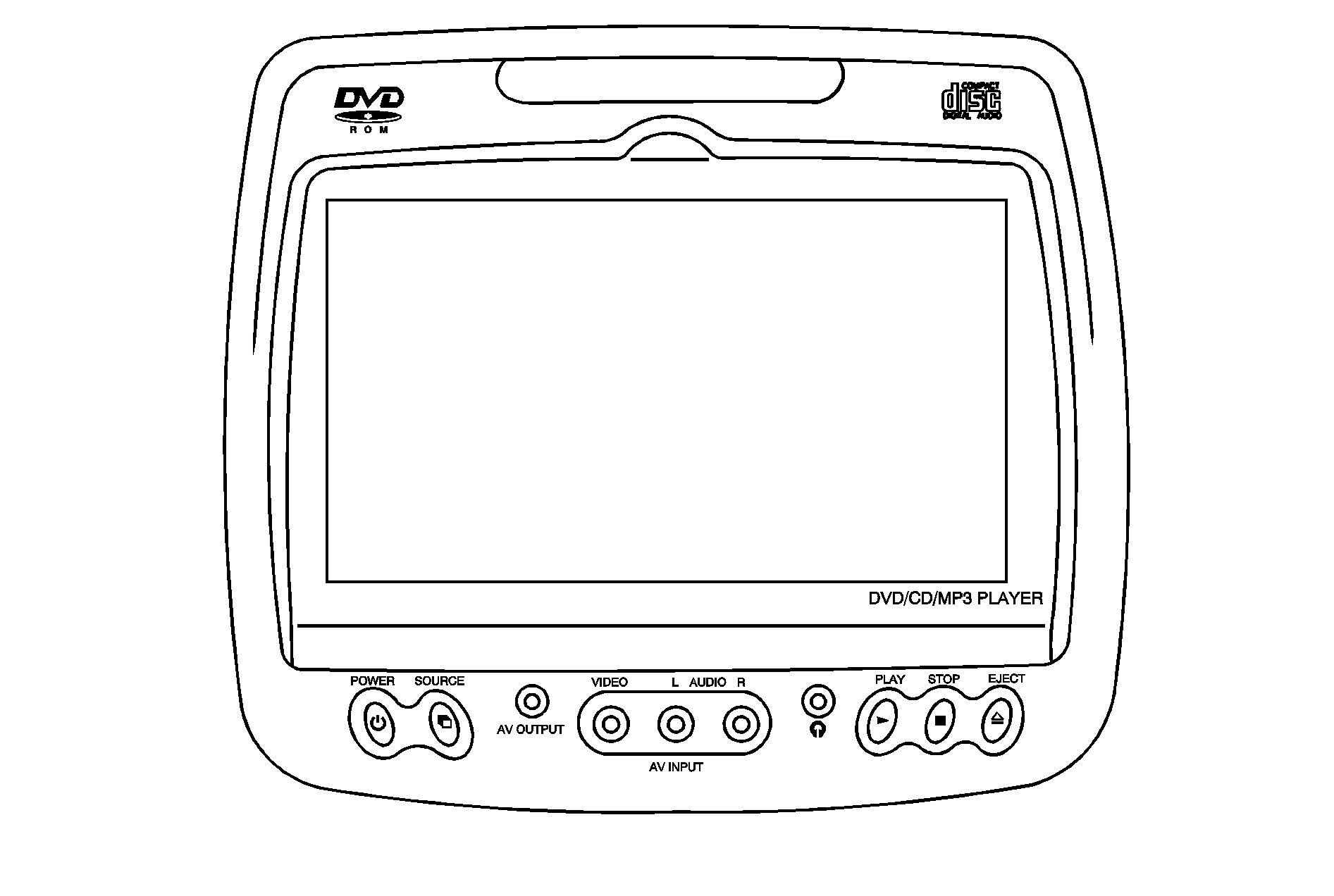
The video display screens are located on the backside of each head restraint.
Notice: Avoid directly touching the video screen, as damage can occur. See "Cleaning the Video Screens" later in this section for more information.
Using the RSE System
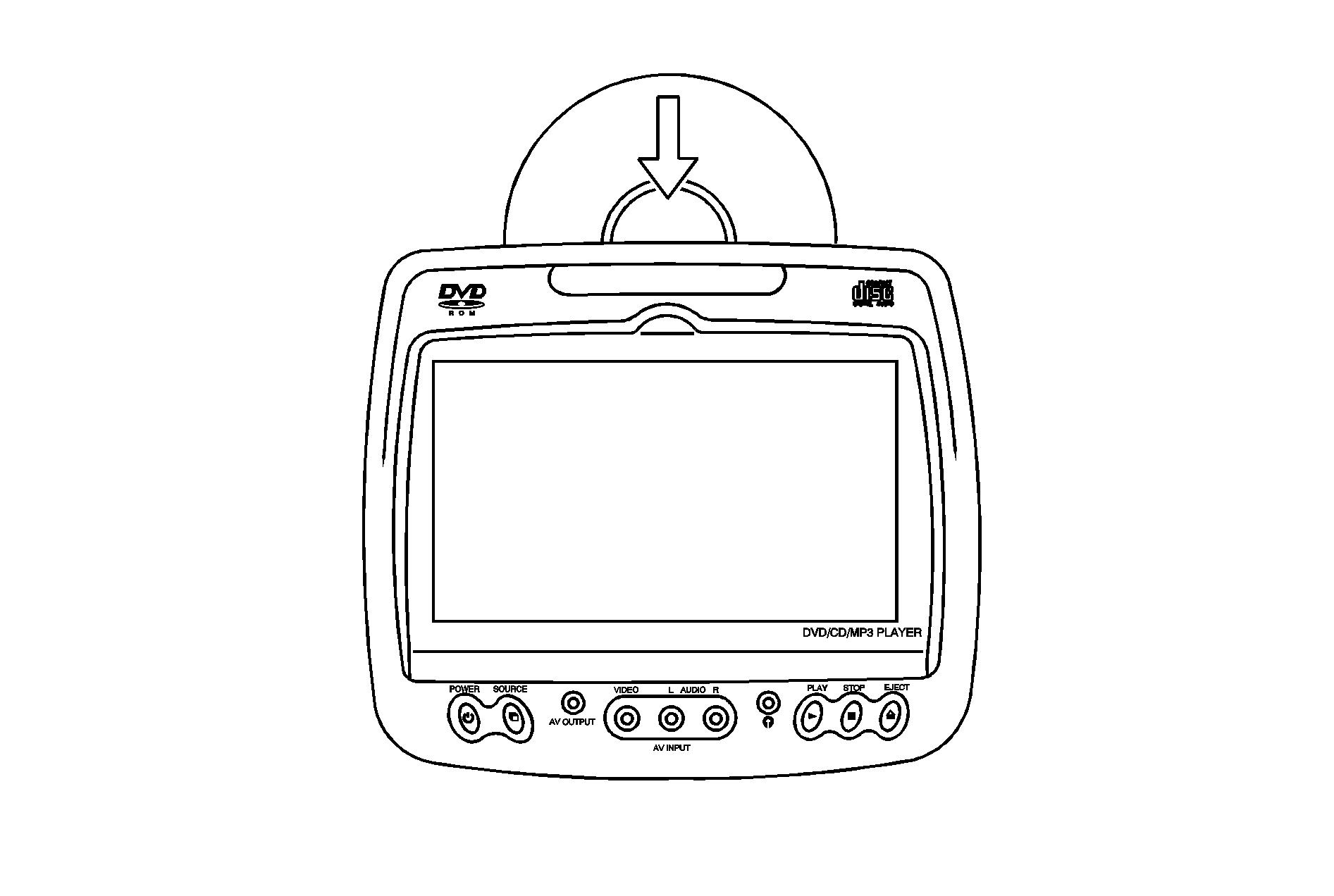
DVD Player: The loading slot for the DVD player is located at the top of the head restraint. Insert the disc partially into the loading slot with the printed side facing the rear of the vehicle. The DVD player automatically draws the disc in, "Loading" displays on the screen along with a disc indicator, and playback starts. If the disc is inserted incorrectly, the DVD player ejects the disc and No Disc displays. Some DVDs do not allow fast forwarding or skipping of the copyright information or previews. If the DVD does not begin playing at the main title, refer to the on-screen instructions. The DVD player can be controlled by using the buttons located below the video display screen or by using the buttons on the system’s remote control. See "Remote Control" later for more information. The following discs are compatible with the DVD player:
| • | DVD-Video: A DVD that has video. |
| • | CD-DA: A CD that has music or sound content only. |
| • | CD-Video: A CD that has a movie. |
| • | CD-R/RW: A disc that has audio files such as CD-R with downloaded MP3 files, MPEG, or JPEG files. |
The DVD player and discs are coded by global region. The DVD players are set to Region 1. Discs with other region codes will not work in the players.
If an error message displays on the video screen, see "DVD Messages" later in this section.
While the vehicle is moving, passengers should not unfasten their safety belts to make adjustments to the video screen control buttons. See "Safety Belts" under, Seats and Restraint Systems in the vehicle’s owner manual. Use the remote control for any necessary adjustments. See "Remote Control" later in this supplement.
POWER : Press to turn the power on or off. Each video screen can be powered on or off independently.EJECT : Press to eject a disc from the DVD slot. If a disc is ejected from the player, but not removed, it will automatically reload into the player. Another way to reload a disc that has been ejected, but not removed from the DVD player, is to press the eject button or the play button.
PLAY : Press this button located below the video display screen to start playback of a disc. On DVDs and video CDs with playback control (PBC), menu screens can display automatically. It might be necessary to press the play button again to begin play. There is a play position memory feature for DVD and video CD only. If the DVD player is turned off and then turned back on, the DVD player resumes playback where the disc stopped. The play position memory is erased if the disc is removed.
STOP : Press once to stop playing a DVD. There is a pre-stop feature for DVD and video CD only. This feature resumes playback of the disc where it was stopped. Press the stop button once during disc playback and displays on the DVD startup screen. This icon disappears after a few seconds. Press the stop button a second time, or eject the disc, to cancel the pre-stop feature and to clear the disc position memory.
SOURCE: Press to select between Monitor 3, Monitor 4, or the AV INPUT. Each video display screen can be adjusted independently, as well as display information from both DVD players and both A/V inputs.
Infrared Remote Sensor: Located in the top center of the video display screen. Do not block the signal from the remote to the sensor.
Infrared Transmitters: Located in the top center of the video display screen. Do not block the signal from the headphones to the transmitter.
Video Display Screen: Located on the back of each headrest.
AV OUTPUT (Audio/Video Output Jack): Located on the lower left side of the screen and is identified on the video screen panel as the AV OUTPUT.
Headphone Jack : Wired headphones can be plugged into the headphone jack with one-eighth inch stereo plugs.
AV INPUT: (Audio/Video Input Jack): The audio/video input jack is located below the video display screen and allows viewing of auxiliary sources such as portable DVD players, game stations, or video cameras, on each screen.
| • | Video Input -- The yellow connector is used for video input. |
| • | L Audio -- The white connector is used for the left side audio. |
| • | R Audio -- The red connector is used for the right side audio. |
Vehicle Speakers
Audio from the DVD player or an auxiliary device can be heard through the vehicle speakers or the wireless/wired headphones, while the radio is tuned to one of the six frequencies selected on the Sound Around portion of the system’s remote control. See "Remote Control" later in this supplement.
Only one audio source can be heard through the vehicle’s speakers at a time. The audio source being used is specified by the A/V (audio/video) source selected on the driver side head restraint video display screen.
To turn the RSE system audio output to the vehicle’s speakers, press Sound Around ON, on the system’s remote control. The audio from the RSE system can be heard through the wireless/wired headphones and the vehicle’s speakers at the same time. The volume on the radio can vary when switching between the radio, CD, DVD, MP3, or an auxiliary device.
Wireless Headphones
The two wireless headphones included with the Headrest DVD RSE system will only work with the Headrest DVD RSE system and are marked for channel 3 and 4. The wireless headphones must be used within a line of sight of the transmitter that is located above the video display screen.
3-4 Channel Selector: This is located on the right earpiece. Either Channel 3 or 4 can be selected with the channel selector. The driver side monitor is designated as Channel 3, and the passenger side as Channel 4. Set the channel selector switch according to the video display screen being viewed. The message, "To listen to this monitor tune your headphones to Channel 3 (or 4)" displays for five seconds then disappears when the video display screen is turned on.OFF/ON (Power): Turn the power switch located on the earpiece to turn the wireless headphones on or off. Each headphone has a light to indicate ON. If the light does not come on, the batteries may need to be replaced. See "Battery Replacement" under Rear Seat Entertainment System in the vehicle’s owner manual. The headphones shut off automatically if the RSE system is turned off or if the headphones are out of range of the transmitter for more than three minutes.
VOL (Volume): Use to adjust the volume on the headphones.
Notice: Do not store the headphones in heat or direct sunlight. This could damage the headphones and repairs will not be covered by the warranty. Storage in extreme cold can weaken the batteries. Keep the headphones stored in a cool, dry place.
Remote Control
To use the remote control, aim at the remote sensor located on top center of the video display screen and press the desired button.
Objects blocking the line-of-sight can affect the function of the remote control. Direct or very bright light can affect the ability of the transmitter to receive signals from the remote control. If the remote control does not seem to be working, the batteries might need to be replaced. See "Battery Replacement" following this section.
The remote control provided with the Headrest DVD RSE system, is not a universal remote control and will not control other equipment.
Notice: Storing the remote control in a hot area or in direct sunlight can damage it, and the repairs will not be covered by the warranty. Storage in extreme cold can weaken the batteries. Keep the remote control stored in a cool, dry place.
Remote Control Buttons
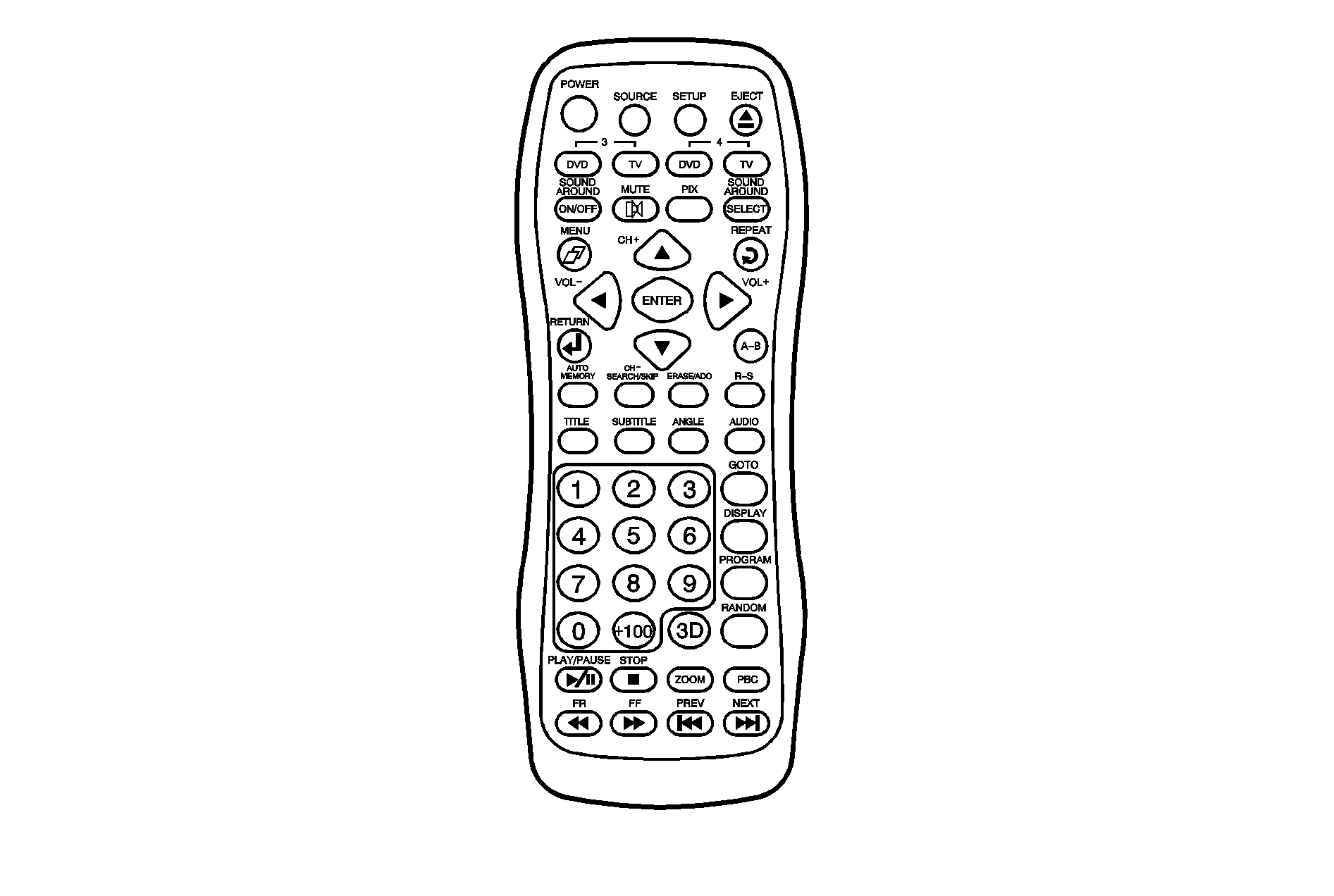
POWER: Press to turn the Headrest DVD RSE system on and off.
SOURCE: Press to select between Monitor 3, Monitor 4, or AV INPUT. Any video equipment connected to the AV inputs automatically overrides the source selection.
SETUP: Press to change the default settings, see "Using the RSE On-Screen Display (OSD) Menus" later in this manual. There are four main menu screens, each screen displays a menu to select different setting options. The screens are:
- General Setup -- adjusts screen settings.
- Audio Setup -- sets the language.
- Preference Screen -- sets the subtitles and parental controls.
- Password Setup -- allows a password to be set.
Press SETUP again to exit.
EJECT : Press to eject or reload a disc.DVD-Video Screen 3: Press the DVD button located under 3 to transmit IR codes for DVD mode on Video Screen 3.
TV-Video Screen 3: This button is not used with the system.
DVD-Video Screen 4: Press the DVD button located under 4 to transmit IR codes for DVD mode on Video Screen 4.
TV-Video Screen 4: This button is not used with the system.
SOUND AROUND ON/OFF: Press to turn the FM Transmitter power on or off.
MUTE (For DVD Only): Press to turn off the headphone sound. Press again to turn the sound on again.
PIX (Picture Selection): Press to adjust the picture’s On Screen Display (OSD). Each time this button is pressed, the picture adjustment OSD, cycles through bars for BRIGHTNESS, CONTRAST, COLOR, and TINT. Use the right/left navigation arrows to adjust the setting. This feature automatically shuts off id another button is pressed or adjustments are not made within six seconds.
SOUND AROUND SELECT: Press to select an FM transmitter channel. The SOUND AROUND SELECT lets the DVD audio play over the vehicle’s sound system by tuning the radio to one of the six FM frequencies listed below.
| • | CH1 : 88.3MHz |
| • | CH2 : 88.7MHz |
| • | CH3 : 89.1MHz |
| • | CH4 : 89.5MHz |
| • | CH5 : 89.9MHz |
| • | CH6 : 90.3MHz |
, , , (Navigation Arrows): Press to navigate through menus.
ENTER: Press to enter a selected function or to begin playback of the disc.
REPEAT : Press to repeat part or all of a chapter, title, track, or the entire disc after using the A-B button to setup repeat preset sections.
RETURN : This button is not used with the system.
A-B: This button is used to setup repeat preset sections. Press this button once while the disc is playing to select the starting position. Press a second time to select the end position. Press a third time to turn the function off. To view the preset section, press .
AUTO MEMORY: This button is not used with the system.
SEARCH/SKIP: This button is not used with the system.
ERASE/ADD: This button is not used with the system.
R-S: This button is not used with the system.
TITLE: Press to enter the disc title mode. The title feature is disc-specific, and may not be available on all discs.
SUBTITLE: Press to change the subtitle language to another available language or to turn subtitles off.
ANGLE: Press to select a different viewing angle for discs that are recorded with different camera angles.
AUDIO: Press to select a different language for discs that are recorded with different languages.
0-9 (Numbers): The numbers located on the lower left side of the remote control can be used to enter numbered menu options, channels, or track numbers.
GOTO: Press to enter the GOTO menu to choose a desired title, chapter, track, or song inside the disc.
DISPLAY: Press to scroll through display information on the upper left corner of the screen, such as title, chapter/track, time elapsed, and time remaining, or to turn off the display
PROGRAM: Press to edit a playback program containing desired titles in the DVD or tracks in the CD-DA.
3D: Press to change between different 3D audio modes for DVD or CD. The options for DVD are: Off, Rock, Pop, Live, Dance, Techno, Classic, and Soft. The options for CD are: Off, Concert, Living room, Hall, Bathroom Cave, Arena, and Church.
RANDOM: Press to play titles randomly.
PLAY/PAUSE / : Press to start playback of the disc, or to pause playback.
STOP : Press to stop playback of a disc.
| • | To resume disc playback, press PLAY. |
| • | To start playback from the beginning of the disc, press STOP, STOP, then PLAY. |
PBC (Playback Control): Press to turn video CD playback control on or off.
FR (Fast Reverse): Press to fast reverse the disc. Press multiple times to choose between 2X, 4X, 8X, 16X, and 32X speeds.
FF (Fast Forward): Press to fast forward the disc. Press multiple times to choose between 2X, 4X, 8X, 16X, and 32X speeds.
PREV (Previous): Press to play the previous chapter or track. To return to previous chapters or tracks one at a time, press and release multiple times until the desired chapter or track is reached.
NEXT : Press to play the next chapter or track. To go to the next chapter or track one at a time, press and release multiple times until the desired chapter or track is reached.
Battery Replacement
To change batteries in the remote control:
- Turn the remote control face down.
- Press down on the ridged area of the battery cover and slide it off.
- Install two AAA batteries into the battery compartment.
- Slide the cover back on until it clicks.
If the remote control is to be stored for a long period of time, remove the batteries and keep it in a cool, dry place.
Using the RSE On-Screen Display (OSD) Menus
Use the OSD setup display menus for:
| • | Initial setup |
| • | Display setup |
| • | Parental control setup |
| • | Adjusting the picture quality |
| • | Setting the various outputs |
| • | On-screen display language |
To use the OSD menus while using the DVD player or an auxiliary device:
- Press the SETUP button on the remote control to display the icons and pages on the display screen.
- Select the desired page by using the left/right navigation arrows to move the cursor.
- Press the SETUP button again on the remote control to cancel use of the setup display.
Not all DVDs support all of the feature defaults in the setup menus. If a feature is not supported, the defaults are provided by the DVD media.
To set the language for the OSD:
- Press the SETUP button on the remote control.
- Use the left/right navigation arrows to navigate the General Setup Page, then use the down navigation arrow to select the OSD language.
- Press the right navigation arrow and then use the up/down navigation arrows to select English, French, or Spanish.
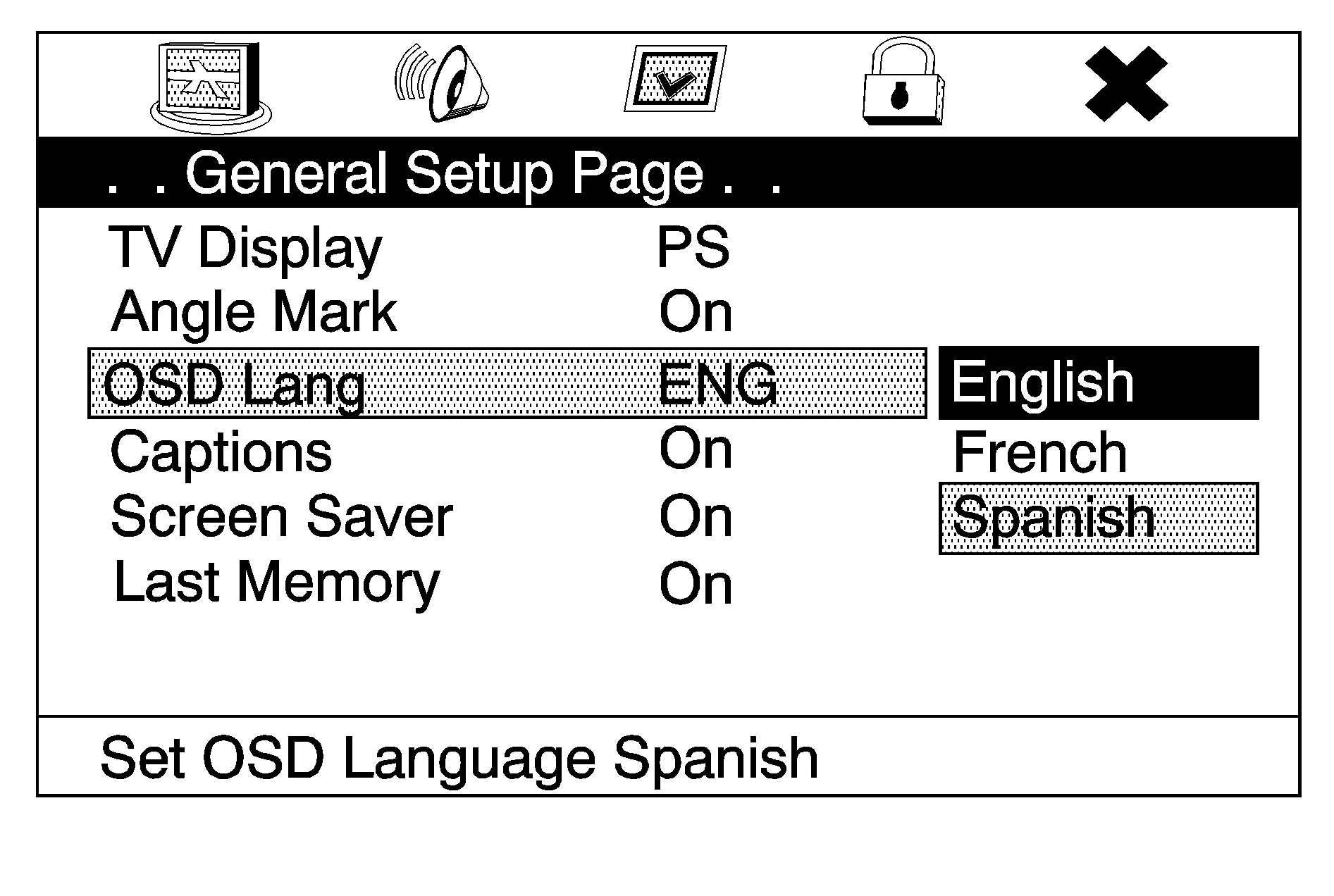
To set the TV display:
- Press the SETUP button on the remote control.
- Use the left/right navigation arrows to navigate the General Setup Page.
- Press the down navigation arrow to select TV Display sub-menu and to adjust the screen setting.
- Press the right navigation arrow and then use the up/down navigation arrows to select a display option.
- Press ENTER on the remote control to confirm the screen.
The display options are:
| • | Normal/PS (Pan and Scan): This displays the wide picture on the screen with a portion of the left and right sides removed. |
| • | Normal/LB (Letter-Box): This displays the wide picture with black bands on the upper and lower portions of the screen. |
| • | Wide (16:9): This option is chosen if the video screen panel is wide screen. |
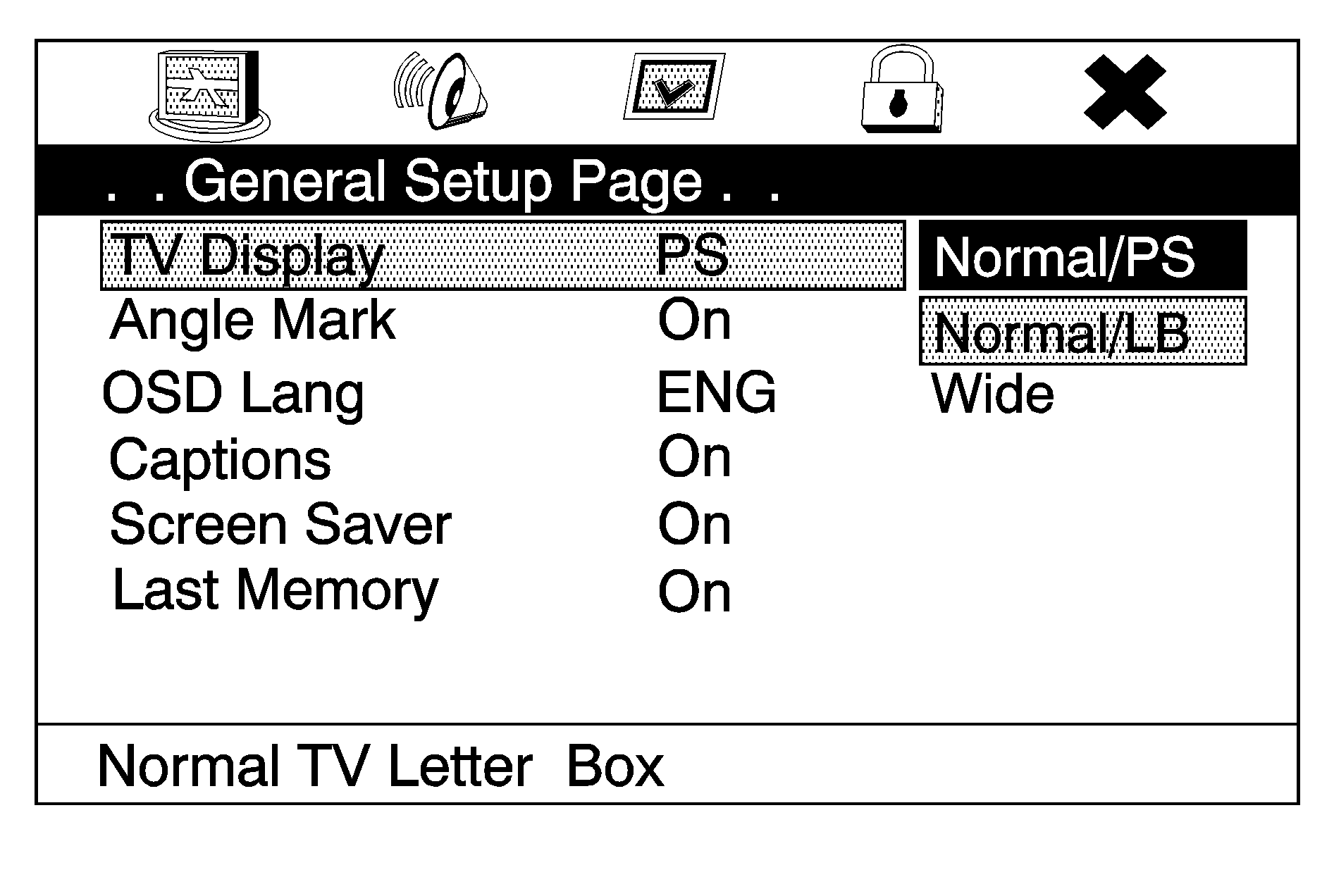
To reset all options to factory defaults:
- Press the SETUP button on the remote control.
- Use the left/right and down navigation arrows on the remote control to select the Default sub-menu under the Preference Page.
- Press the right navigation arrow, then press ENTER to reset.
This function will not affect the parental setting.
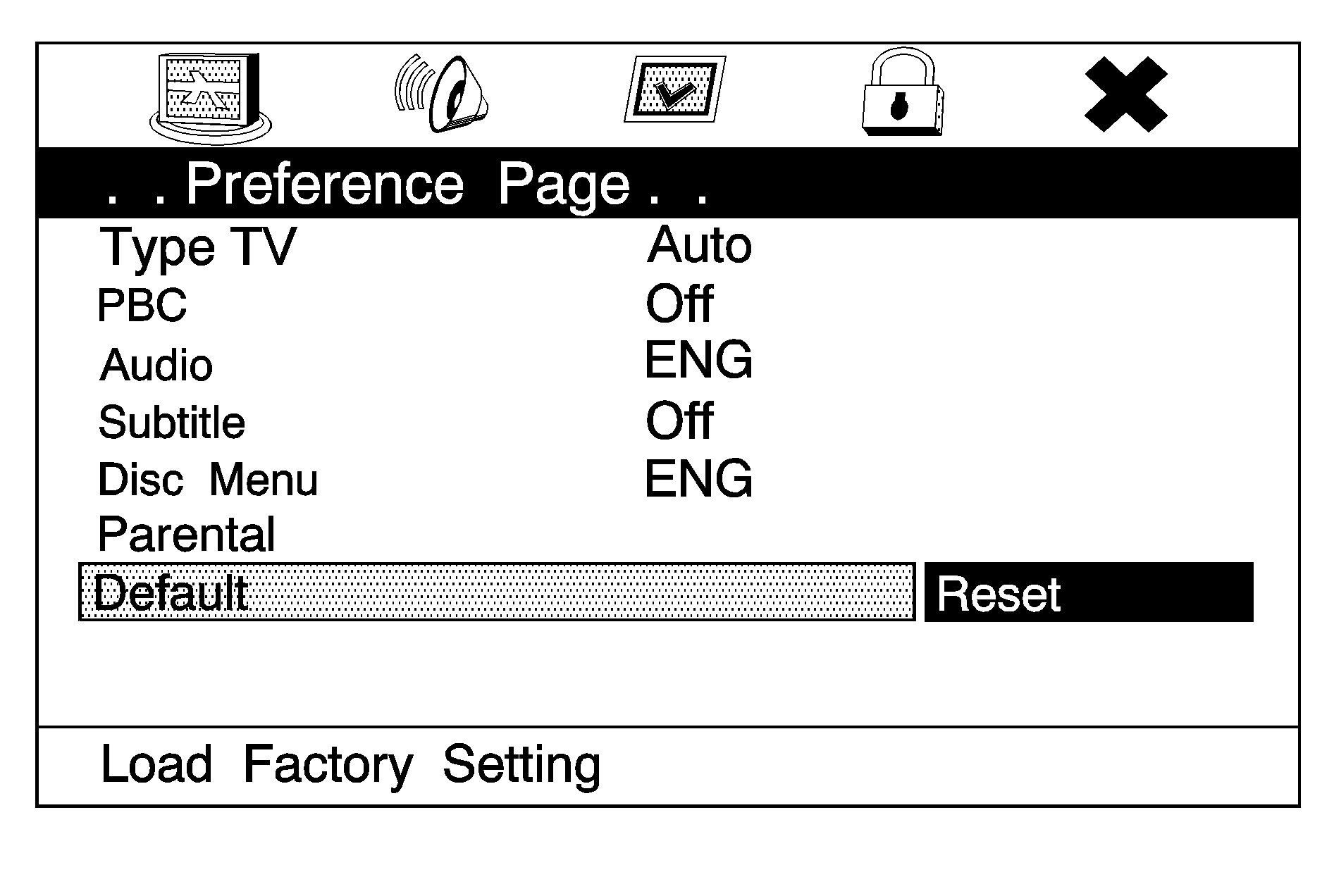
Settings for Parental Control
Use the SETUP MENU to access the parental control feature. It allows for control of the type of movie rating content (from G to Adult) that can be viewed and is only accessible when no disc is loaded.
To setup the Parental Control:
- Press the SETUP button on the remote control.
- Use the left/right and down navigation arrows on the remote control to select the Parental sub-menu under the Preference Page.
- Press the SETUP button, and use the right and up/down navigation arrows to select any one of the available Rating settings from the display menu.
- Press the ENTER button to confirm the selection.
The Rating settings are:
| • | Kid SAF |
| • | G |
| • | PG 13 |
| • | PG R |
| • | R |
| • | NC 17 |
| • | ADULT |
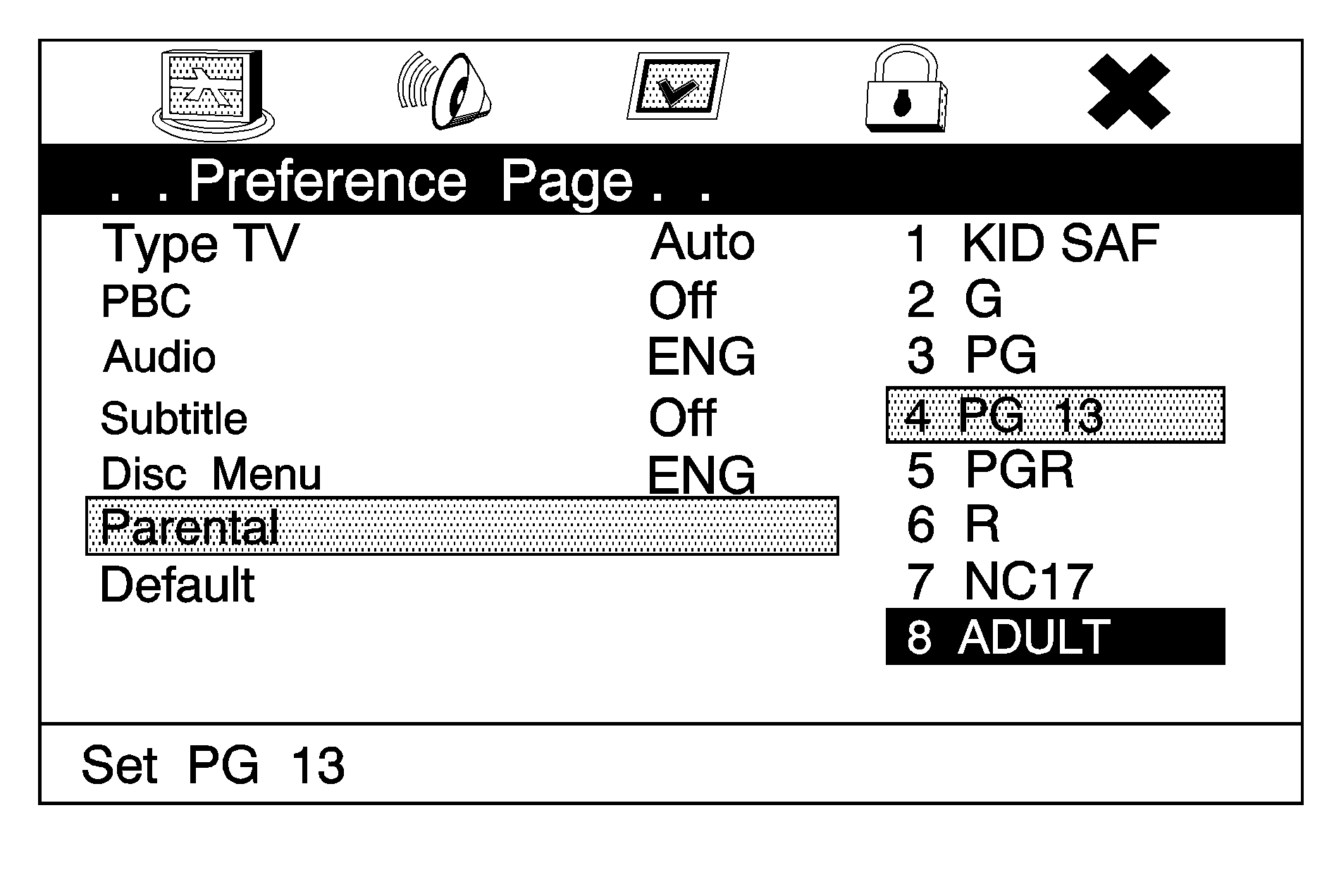
If a disc is inserted into the DVD compartment slot and it exceeds the Parental Setting, the following message appears on display:
The Parental Setting of this player prohibits play. Would you like to allow this disc to play?
If yes if selected, the six digit password must be entered for the disc to play. If the wrong password is entered, the following message appears:
This movie will not play due to the Parental Setting of the player.
To create a six digit password, use the numeric keypad on the remote control. Press the ENTER button to confirm. The default password is 136900.
To change the Parental Control Password:
- Press the SETUP button on the remote control
- Navigate to the Password sub-menu under the Password Setup Page.
- Press the right navigation arrow, then press ENTER.
- At the Old Password option, enter the old password or the default password (136900).
- At the New Password option, enter the new password (six digits) using numeric buttons.
- At the Confirm PWD option, confirm the new password by entering the new password again.
- Scroll to the OK button and press ENTER. The message "Your password has been changed" displays.
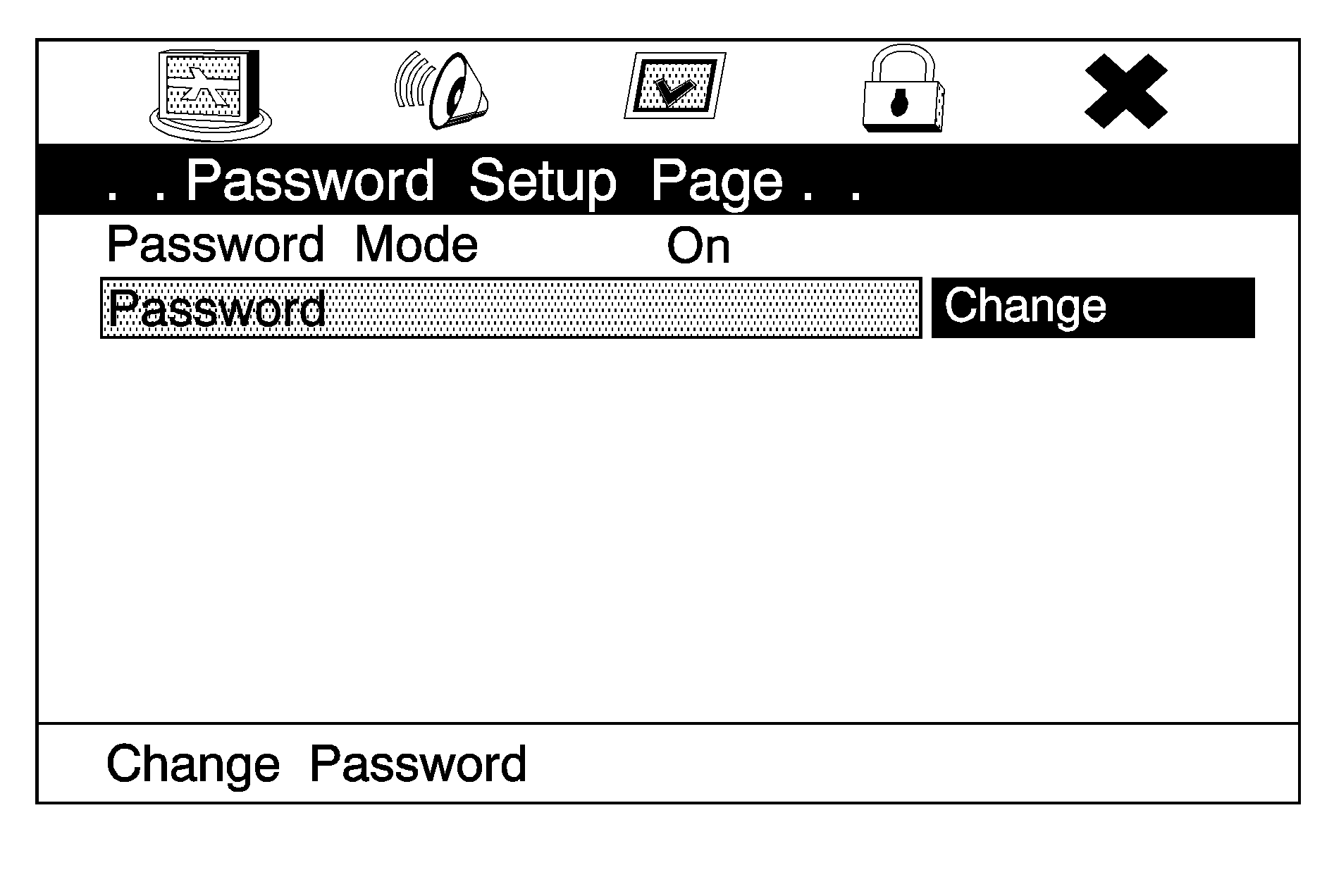

Playing Audio CD
When an audio CD is playing, the display shows the current track and the amount of time that track has been playing, the total amount of time on the disc, and the current time running on the disc.
DISPLAY: Press to choose from the following display options:- Press DISPLAY once and Single Elapsed appears along with the current track playing and the length of time for that track.
- Press DISPLAY twice and Single Remain appears along with the current track playing and the amount of time left on the track.
- Press DISPLAY three times and Total Elapsed appears along with the current track playing and the total time that has played on the CD.
- Press DISPLAY four times and Total Remain appears along with the current track playing and the amount of time left on the CD.
| • | Track repeats the track that is playing. |
| • | All repeats the disc that is playing. |
Playing MP3 CD
MP3 is the format for storing digital audio. An audio CD quality song can be compressed into the MP3 format with very little loss of quality, while taking up much less space. CD-R/RW discs that have been encoded in MP3 format can be played on the DVD player. See "Using an MP3" under the Audio System(s) section in the vehicle’s owner manual.
Selecting Folders and Songs
When an MP3 disc is inserted in the player, the navigation screen appears. The folders and songs can be changed by navigating through the file system. The DVD player plays the songs in the order they were burned to the disc.
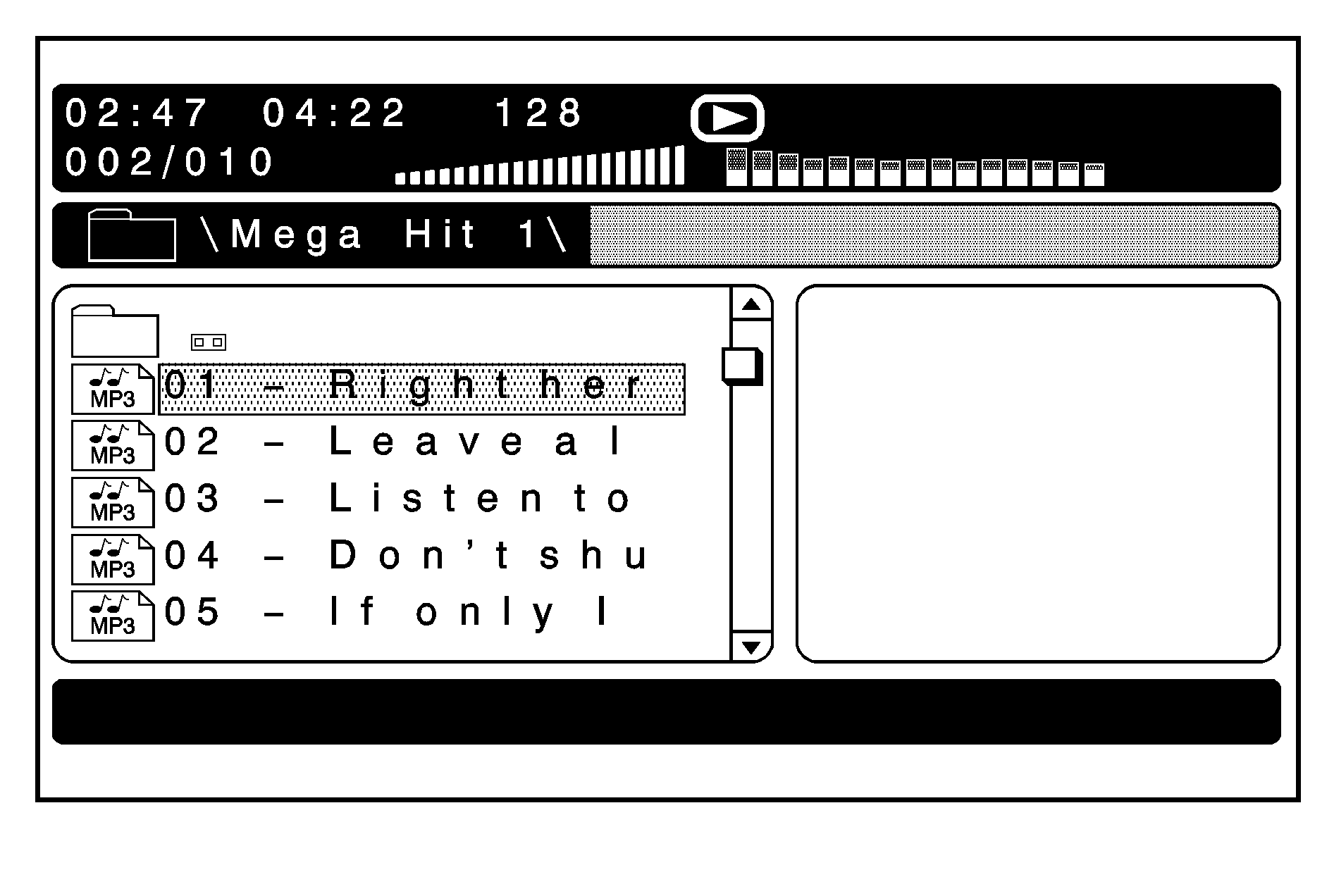
- Press STOP if a disc is playing. Press the up or down navigation arrows on the remote control to go through the folder list on the left side of the screen.
- Press ENTER when the desired folder is highlighted.
- Press the up or down navigation arrows to go through the song list and highlight the desired song. Press ENTER to begin the playback of the selected song.
Skipping a Song
NEXT: Press to go to the next song.PREV (Previous): Press to return to the beginning of the song that is currently playing. Press PREV twice to go to the previous song.
Selecting a Play Mode
The order the songs are played can be temporarily chosen on a disc. The FOLDER play mode is the default. Press the REPEAT button to access the play mode options.
The play mode options are:
| • | Single -- Play a selected song. |
| • | Folder -- Play the folder in the order the songs were recorded. |
| • | Shuffle -- Play the songs in random order, from within the selected folder. |
Using the REPEAT Feature
REPEAT: Press to change between Repeat One and Repeat Folder.| • | Repeat One -- Repeats the song that is playing. |
| • | Repeat Folder -- Repeats the folder that is playing. |
Tips and Troubleshooting Chart
Problem | Recommended Action | ||||||||
|---|---|---|---|---|---|---|---|---|---|
IR Sensor Inoperative |
| ||||||||
No picture |
| ||||||||
No Sound |
|
Cleaning the Video Screens
The video display screens are made of a specially coated glass and can be scratched or damaged by abrasive products, solvents, or ammonia-based window cleaners. Clean with a soft, lint-free, cotton cloth that has been slightly dampened with warm water. Dry the screens by wiping with a clean dry cotton cloth.
Cleaning the Components
Use care when touching or cleaning the components such as the DVD player or the discs. See "Care of Your CDs and DVDs" and "Care of the CD and DVD Player" under, Radio(s) in the vehicle’s owner manual.
